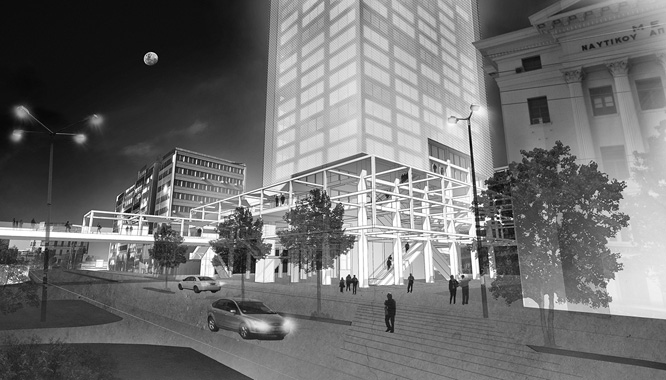
|
„Der Bau
von Wirklichkeit
vollzieht sich dadurch,
dass Architektur sich
in Beziehung zu
den vorhandenen Dingen
und zur Stadt,
zu den Ideen
und zur Geschichte setzt.
Aldo Rossi
„The construction of reality
is put into effect by an architecture
that builds a relation to
the pre-existing things and to the city,
to ideas and to history.
Aldo Rossi
|
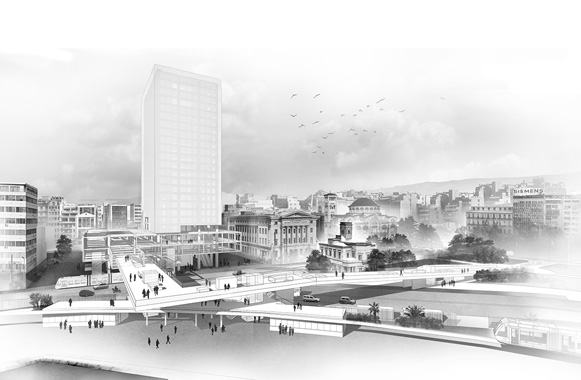
|
Der Hafen von Piräus ist ein komplexer und heterogener Ort, an dem unterschiedliche Gruppen auf engem Raum einer Vielzahl unterschiedlicher
Aktivitäten nachgeht, unterschiedliche Funktionen in Anspruch nimmt, sich Unterschiedliches erhofft. Inmitten dieses hektisch und chaotisch
anmutenden Nebeneinanders, Miteinanders, Gegeneinanders und vor allem Durcheinanders ruht ein schlafender Riese: der Pirgos Peiraia. Durch
seine exponierte Lage und seine Größe fällt ihm eine städtebauliche Schlüsselfunktion zu. Er muss im Kontext gedacht werden.
Lefkos Pirgos und Ypsilos Dromos
Der Vertikalen des Turms wird ihr dialektisches Gegenstück – eine Horizontale – hinzugefügt: der Ypsilos Dromos. Ypsilos Dromos (υψηλός δρόμος)
bedeutet im Griechischen so viel wie hoher, aber auch erhabener Weg. Er verbindet nicht nur das Gebäude mit seinem Umfeld, sondern auch dessen
verschiedene Bereiche untereinander. Hafen und Stadt werden wieder miteinander verschränkt, die bestehende Stadtstruktur und die Plätze, die
im Laufe der letzten Jahrzehnte immer stärker fragmentiert wurden, werden für Bewohner und Besucher wieder erlebbar und als öffentlicher Raum
benutzbar gemacht. Historische räumliche Bezüge werden wieder hergestellt und neue Raumsequenzen geschaffen. Der Ort wird repariert.
Der Pirgos Peiraia selbst wird zum Lefko Pirgo. Lefkos Pirgos (λευκός πύργος) bedeutet weißer Turm. Um das Bauwerk aus seinem von der Stadt
isolierten Dasein zu befreien, wird es in den unteren Geschoßen radikal geöffnet und damit ein neuer alter Platzraum wieder hergestellt. Sein weit-
hin sichtbares Erscheinungsbild wird ebenso grundlegend verändert: Anstatt im mittlerweile eingespielten, neoliberalen Konzert der kurzfristigen
Effekthascherei, der Originalität um jeden Preis mitzuspielen, wird der Lefkos Pirgos ganz auf seine Größe und archaische Primärform, auf seine
physische Präsenz reduziert. Anstatt wie bisher durch das (Werbe-)Bild auf dem Gebäude dominiert zu werden, wird die Architektur selbst sichtbar.
Das Gebäude wird, entsprechend seiner Lage am Hafen, dem die Konfrontation mit dem Neuen und Fremden immanent ist, mit Funktionen rund um
junge Kunst und Kultur bespielt. Diese werden ergänzt mit den traditionellen, kleinteilig, informell und oft provisorisch strukturierten Nutzungen
von Markt, Klein-Gastronomie, Verkaufskiosken und Straßenhandel, die schon immer da waren und nun am Ypsilo Dromo und rund um den Lefko
Pirgo einen Raum erhalten, der ihrer wichtigen Rolle im griechischen Leben gerecht wird.
Der neu geschaffene Raum löst das ein, was das dominant aufragende Zeichen des Pirgos Peiraia seit vier Jahrzehnten verspricht: ein Zentrum
urbanen Lebens. Zeichen und Raum, Vertikale und Horizontale werden wieder zusammengeführt.
|
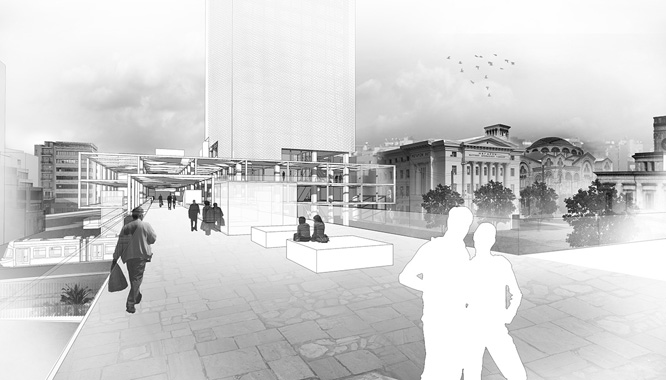
|
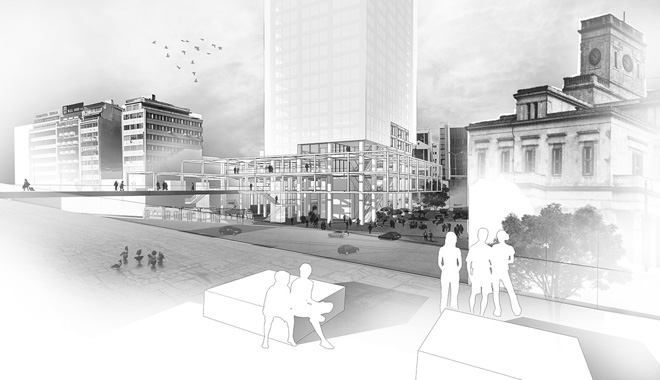
|
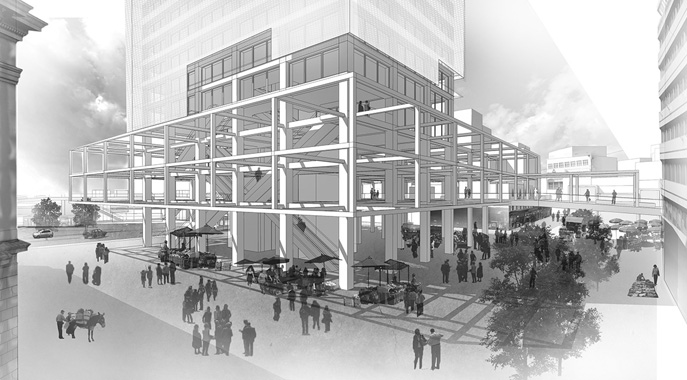
|
Lefkos Pirgos and Ypsilos Dromos condens the acquired in a design that responds very closely to the con-
text of the place – its structure, function and meaning – and formalizes the architectural and social attitude.
The Pirgos Peiraia is awakened up to reality from its almost 40 years lasting sleep and integrated in the
hectic coexistence, cooperation, conflict and – most of all – confusion of the heterogeneous port. The broad
context the eight essays of the first part opened enables a comprehensive approach that considers the city
and its identity, the potentials and dangers of the high-rise typology, the dialectic of building and image
and the contemporary life at the specific location. The design doesn’t juxtapose the topics side by side,
but tries to interweave them with each other and form them to a clear and simple architecture. To an archi-
tecture that respects all influences and given circumstances, formulates and formalizes an architectural and
social attitude and, at the same time, is offering maximal openness, determining as few as possible.
Space and image, interaction and iconicity, close and far are identified as the horizontal and the vertical
dimension of a high-rise in context which constitute a dialectic pair. The verticality of the tower is completed
with its counterpart – a horizontal element: the Ypsilos Dromos (Elevated Path). It not only connects the
building with its surrounding but also the various spaces among each other. The new (and re-)created space
redeems what the dominantly towering sign of the Pirgos Peiraia promised for four decades: a center of ur-
ban life. Harbor and City are interlaced again, the existing urban fabric and the squares that have been in-
creasingly fragmented during the years are again made tangible for residents and visitors and usable as
public space. Historic spatial relations are re-established and new spatial sequences created.
The Pirgos Peiraia itself becomes the Lefkos Pirgos (White Tower). To free the building from its isolation
the first couple of floors is radically opened – undressed – and with that a new old public space is re-estab-
lished. (Until the „Piraeus Trade Center“ has been constructed by the then governing Junta to succeed on
the global market, a local and true marketplace existed in its place.) What remains is the naked tectonic
concrete structure that connects the horizontal and vertical seemingly contact-less.
|
The building is, according to its location at the port with its intrinsic confrontation with the new
and the stranger, appropriated with functions all about the production and presentation of young
art and culture. Studios for artists, a boardinghouse, a theatre, an art-gallery and a library are
completed with gastronomy use on the top floors and the traditional, small-sized, informal and
temporary organized uses as market, with small gastronomy, periptera (kiosks) and street vendors
that all have always been here and now, on the Ypsilo Dromo and around the Lefko Pirgo are
given the space that copes with their role in Greek everyday life. Symbolically for the integration
into the existing city structure stand the configuration of the Ypsilo Dromo which refers to the
streets’ orthogonality and implements the change of scale between the port and its backstreets as
well as the Ypsilos Dromos’ flooring, which adopts and continues the irregular and improv-
isational pavement of Athens’ streets.
The immanent iconic power of a high building is concretized as a White Void, as antithesis to the
white noise of the urban picture overkill. Instead of taking part in the by now well-rehearsed
neoliberal concert of short-term sensationalism, in the originality at any cost, the Lefkos Pirgos is
reduced to its size and archaic primary shape, to its physical presence. Instead of being dominated
by the (commercial) image on the building, architecture itself, the essential idea of building becomes
visible. The facade, appearing at the same time covering and uncovering addresses the dialectic of
envelope and structure, appearance and reality and as an „enigmatic signifier“ (Charles Jencks)
makes one wonder about the content, just like a covered ancient icon. As an „automonument“ (Rem
Koolhaas) the pair Lefkos Pirgos and Ypsilos Dromos establishes a simple form that does not need
to immediately express the complexity it internalizes (Ullrich Schwarz), an architecture thats poetry
does not arise from its autonomous aesthetics but from the faith in the place and the staging of it
(Roger Diener). A sign against the (self-involved) signs is given. It isn’t produced an architectural
spectacle but established an architecture that offers an urban stage for the social spectacle.
|
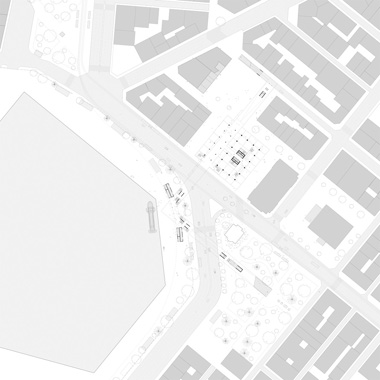
|
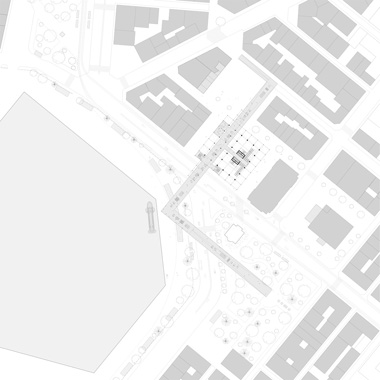
|
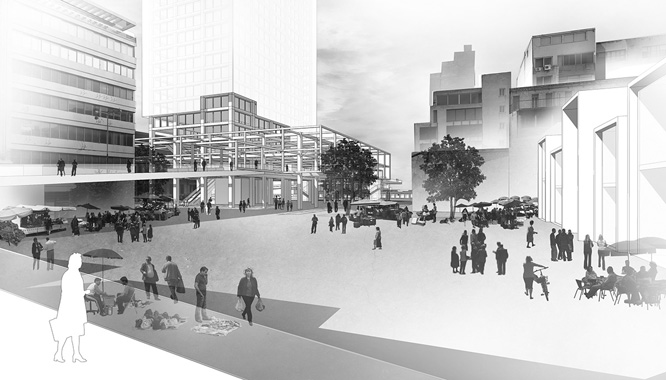
|
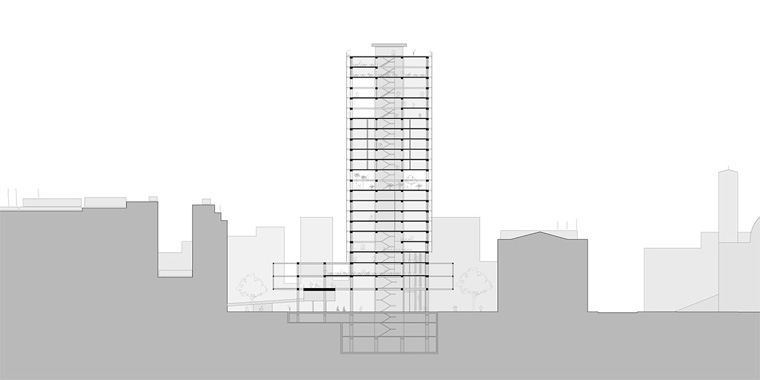
|
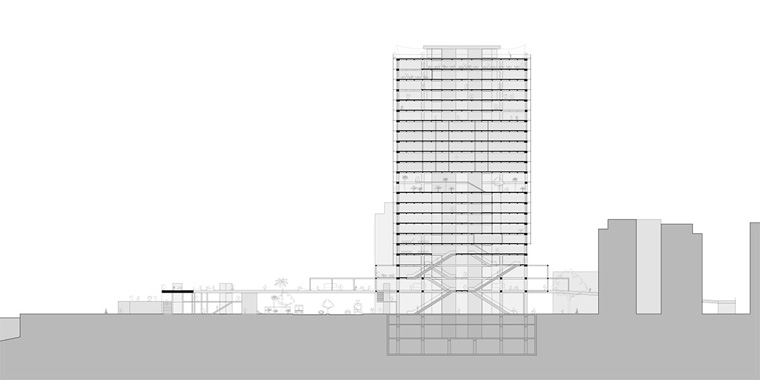
|
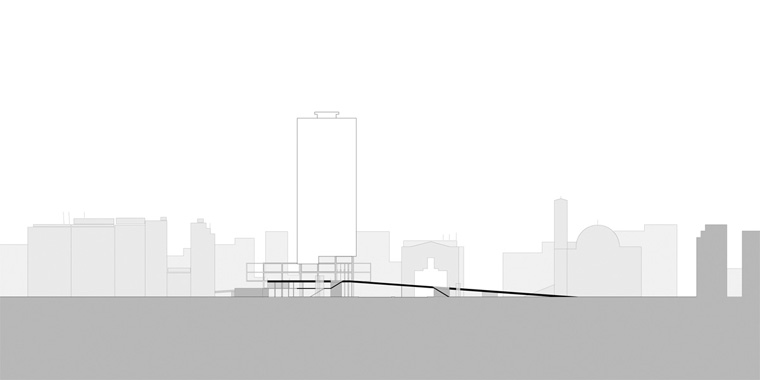
|
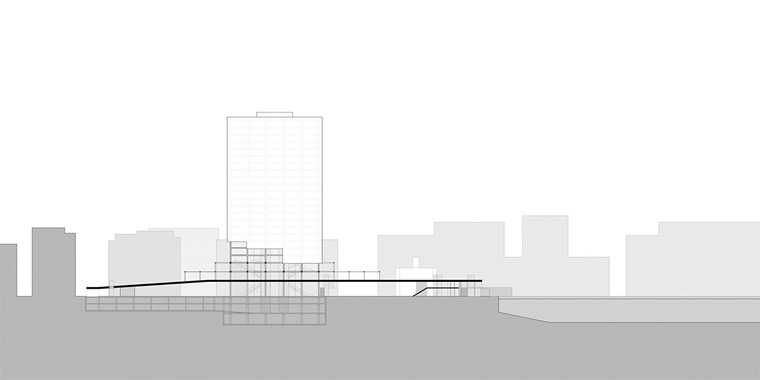
|
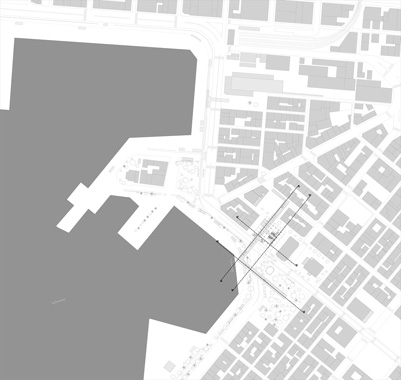
|
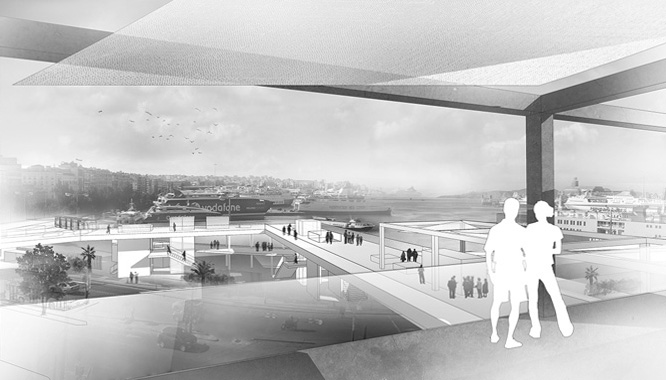
|
„Es geht um Spannung,
um Atmosphäre, um Rhythmus,
um die richtige Abfolge von Eindrücken.“
Rem Koolhaas
„It's all about tension,
about atmosphere, about rhythm,
about the accurate sequence of impressions.“
Rem Koolhaas
|
|